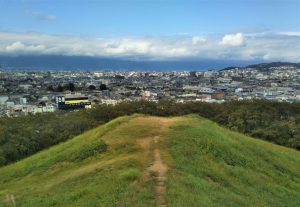A Dig Into Matsumoto’s Distant Past (Going on now!)
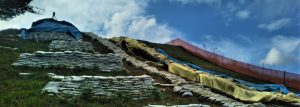
Kobo-yama is an unassuming, un-eye-catching hill in southeast Matsumoto. Blending into the mountains beyond the commercial crush of Namiyanagi, it sits largely unnoticed. Only during cherry blossom season, when its city-facing slopes explode in pinks and whites, do the hordes descend.
Even then, the understated history of this place gets lost beneath the feet of the camera-toting masses.
These days it’s a slightly different story.

In 1974 an archaeological dig into the contoured crown of Kobo-yama revealed a 3rd Century burial chamber constructed with stones collected from the rivers running through the ancient flatlands. No human remains were found, but Japan’s Kofun Era was marked by – indeed, named for – the burial mounds that dot the landscape from here to Nara. To say, then, that this tumulus housed the ruler of the land over which this hilltop looks is more than mere speculation.
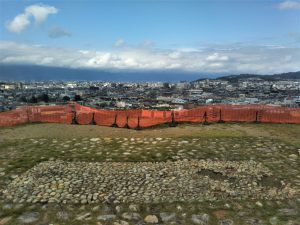
Artifacts that were discovered inside the stone chamber included a sword and a mirror, two of the three ancient items of Japanese royalty (the third being a polished stone known as a magatama, worn around the neck for ceremonial and decorative purposes). Also unearthed were several pieces of pottery that shared characteristics of pottery from the Tokai region to the south, suggesting a trade or possibly a bloodline link with the inhabitants and rulers of other areas.
Thirty-six years after that first dig, the folks with the shovels are at it again.
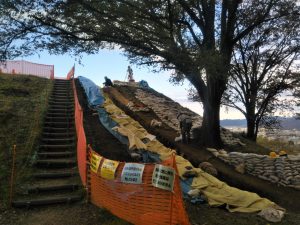
They glanced my way as I walked slowly along the plastic fencing, trying to get a look into the bowels of the mountain now exposed to the elements through neat, narrow excavations. On the north and the east sides they had dug out meter-deep trenches that ran upward with the face of the hill. Tarps covered the edges. Countless sandbags kept the rest of the mountain in place (I guess). Tools and accouterments of the archaeological endeavor lay scattered about.
Superficially, it seemed a lot was going on. But among and underneath these things, all I saw was dirt.
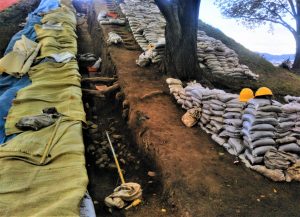
“Hatsuhori chosa desu,” said the woman who had come over, inexorably drawn to the keen interest flowing out of my eyeballs.
“Yeah, I figured as much,” I replied in as nice a way as I could.
She went on to explain how another excavation had taken place “thirty, no, forty years ago, maybe, almost” and described the things that were discovered then. “Everything is on display at the archaeological museum,” she added. “Over in Nakayama. Do you know?”
Yes, I’d been there, early in this Matsumoto chapter of my life.
The present dig, she explained, was being conducted to find out – as accurately as possible – the dimensions of the original burial mound. “This isn’t the actual tumulus,” she said, pointing at the ground all around us. “The real thing is about a meter underground.”
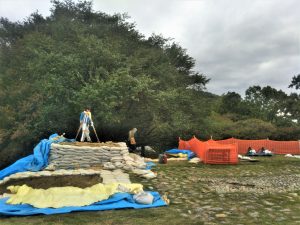
This kofun, like many that have been discovered, consists of two main parts: a rounded main section and a rectangular front section, together making a shape somewhat like an old keyhole. They’d been excavating since June, having waited until the cherry blossom season was over and everyone had gone home. They’d be out here through the rest of the year, digging and measuring and recording things in their notebooks.
I asked if they were going to strip away that meter of dirt and return the burial mound to its original form. Interestingly, she said that they hadn’t decided exactly what they were going to do. She did say that whatever plan would ultimately be carried out, it wouldn’t be until next year, after cherry blossom season.
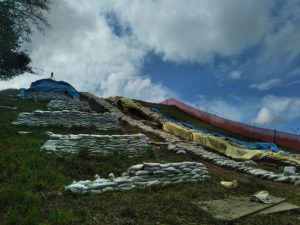
It’s been here since the 3rd Century, it ain’t going anywhere.
Such is the way of the world. And our ongoing exploration into it.
Meantime it is still possible to climb to the top of Kobo-yama. They’ve left the steps open so those few who come here outside of April can still enjoy the sweeping view of the northern Alps – and, if they are interested, the ancient history of what lies underneath their feet.
